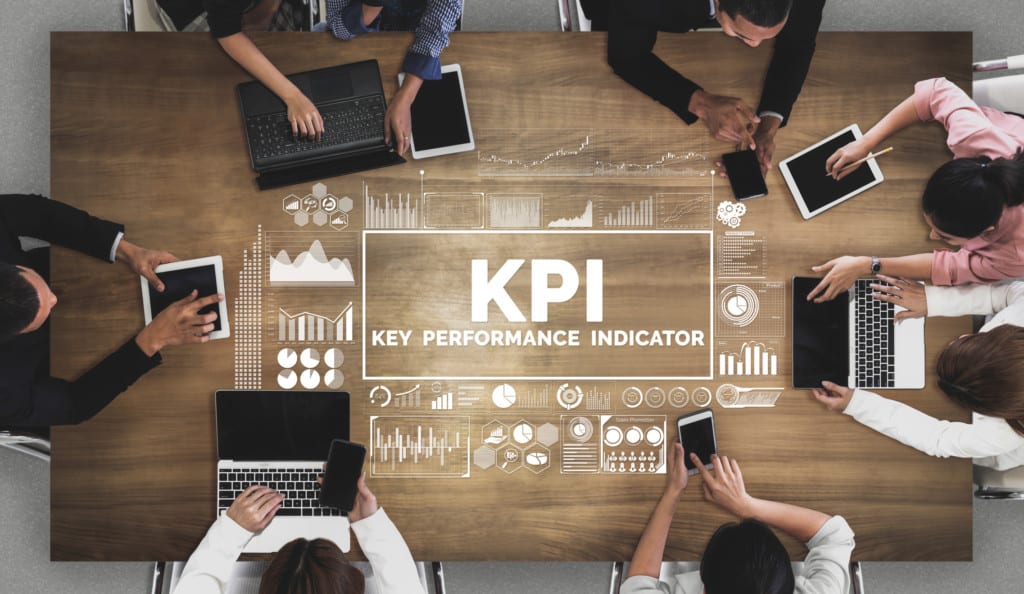
How can you anticipate, adjust and excel in a constantly changing world?
In a world of rapid change, Supply Chain performance management is a key success factor for companies. Beyond being an operational necessity, the implementation of key performance indicators is proving to be an essential strategy.
Let’s delve into the world of Supply Chain KPI and discover how they can transform your Supply Chain, fostering anticipation, adjustment and, ultimately, operational excellence.
Supply Chain KPI fundamentals
The intelligent use of KPIs goes beyond simple data collection.
It is a powerful asset for the organization, providing a precise diagnosis of its performance and operational health.
Alignment with strategic objectives
KPIs must be carefully aligned with the company’s strategic objectives. Each indicator must be selected according to its contribution to the overall objectives the organization wishes to achieve. For example, if the strategic objective is to optimize profitability, cost-related KPIs such as inventory value, storage costs and transport costs should be prioritized. This alignment ensures that each key performance indicators contributes significantly to the achievement of the defined strategic objectives.
Relevant data collection
The relevance of the data collected to feed the indicators is crucial to obtaining an accurate diagnosis. It is essential to ensure that the data captured is accurate and reliable, and that it directly reflects operational performance.
Contextual, interconnected analysis
KPI analysis should not be carried out in a stand-alone manner. It is essential to understand the relationships and interconnections between different indicators. For example, a drop in forecast accuracy can have a direct impact on inventory turnover and associated costs. By analyzing these KPIs in context, the organization can identify the root causes of performance variations and take targeted corrective action.
Communication and transparency
Transparent communication of key performance indicators results to all stakeholders promotes a common understanding of organizational performance. Regular reporting and interactive dashboards enable operational teams, managers and even external partners to closely monitor the indicators relevant to their respective responsibilities. This creates a culture of commitment and continuous improvement.
Constant iteration and adaptation
The environment and organizational objectives evolve over time. Consequently, KPIs must be subject to constant iteration and adaptation. Periodic revisions of indicators, based on evolving business needs, ensure that they remain relevant and continue to provide an accurate diagnosis.
Towards Operational Excellence
As the company’s compass, KPIs occupy a central position in the continuous improvement process. As strategic, fact-based tools, they not only measure organizational performance, but also play an essential role in fostering a dynamic culture of continuous improvement.

Methodology: Supply Chain KPI successful integration for optimum results!
-
Defining objectives
Implementing key performance indicators is a fundamental step in improving Supply Chain performance. To guarantee the success of this approach, it is imperative to begin by carefully defining the company’s strategic and operational objectives. These objectives must be clear, specific, measurable, achievable and time-bound (SMART). This initial step determines the direction in which the company wishes to pilot its Supply Chain, and sets the basis on which performance indicators will be selected.
-
Analysis of existing situation
Once the objectives have been agreed, the selection of KPIs requires a rigorous methodology. It is crucial to involve stakeholders at all levels of the chain, from operations managers to logistics teams and even external partners. A thorough analysis of existing processes is an essential step. This analysis must take into account every stage of the chain, from supplier management to the distribution of finished products. It identifies the strengths and weaknesses of the current supply chain, providing a solid foundation for the selection of key performance indicators.
Stakeholder involvement is essential. By engaging operational teams, logistics managers, sales managers and other key players, the company can benefit from a holistic understanding of the needs and challenges encountered at each stage of the supply chain. This ensures that the KPIs chosen truly reflect the concerns and objectives of the entire organization.
-
Choosing KPIs and assigning targets
After selecting the Supply Chain KPIs, it’s crucial to define clear targets. These indicators must be objectively measurable, and the results easily interpretable. Communicating these targets to all stakeholders is just as important as setting them, as it ensures a common understanding of performance expectations. The governance of indicators reviews is crucial to ensuring the effective use of them in this continuous improvement process.
-
Governance
Key performance indicators implementation should not be seen as a one-off initiative, but rather as an ongoing performance management process. It is imperative to review them on a regular basis, taking into account changes in the company’s objectives or context. This flexibility is essential for adjusting them, ensuring their continued relevance and alignment with Supply Chain developments.
To oversee KPI reviews, we recommend setting up a dedicated performance review. This review should be made up of representatives from the various contributing functions, including technical experts, operational managers and key stakeholders.
It is also essential to establish a regular frequency for the reviews, taking into consideration the specific nature of each indicator. Some indicators may require daily review, while others may be assessed on a weekly or monthly basis.
To foster a common understanding of performance and improvement targets, it is also imperative to establish transparent communication mechanisms. This includes regularly sharing the results of KPI reviews with the whole organization.
By building flexibility into the review process, it becomes possible to make rapid adjustments in line with changes in the business environment or the company’s strategic priorities. Thus, by following a well-defined governance, KPI reviews become a powerful tool not only for assessing performance, but also for effectively guiding continuous improvement initiatives within the company.

A few Supply Chain KPI standards for a high-performance Supply Chain
Boost your supply chain to the next level of operational excellence! Standard and must-have Key performance indicators (KPIs) are essential to ensure that your supply chain is managed in the best possible and most efficient way.
Forecast accuracy and bias
Forecast accuracy measures how close forecasts are to actual results, while bias measures whether forecasts are systematically higher or lower than actual results. Also called DPA : Demand Plan Accuracy.
OTIF (On-Time In-Full)
Percentage of orders filled on time and in full. A high order fill rate is a sign of an efficient supply chain, while a low order fill rate indicates an inefficient process or a lack of adequate inventory.
Inventory Turnover Rate (IRR)
Number of times inventory is sold and replaced in a given period. A high inventory turnover rate indicates better resource management and more efficient use of capital.
Logistics capacity utilization rate
Measures the capacity (number of storage locations, number of production hours, etc.) that has been utilized relative to that available during a given period, typically a week, month or quarter. The higher this figure is, the better your Supply Chain is doing!
Transport costs per unit shipped
Indicates how much each unit shipped costs in terms of transport costs, by dividing the total transport costs incurred during a given period by the total number of units shipped. It provides an overview of the different delivery methods that offer greater savings than others.
Supply Chain KPI are much more than just indicators. They are the fundamental pillars that can truly crown your strategy with success. By ingeniously integrating them, aligning them closely with your objectives, and instilling a culture of continuous improvement underpinned by tangible data, you have the power to propel your organization towards operational excellence, even in a world of constant change.
These pillars are not just abstract concepts, but concrete levers that, when activated, generate tangible results. Visualize optimal order and distribution management, inventories assessed and adjusted with surgical precision, perfectly calibrated supply and demand planning, all supported by advanced, fact-based data analysis.
Supply Chain KPIs are not simply the foundations, but the drivers of efficiency and sustainability within the complex supply chain. It is through this careful integration that your organization can not only adapt to change, but also anticipate it, establishing a strategic edge.
So, by fully embracing these pillars, you’re not just forging a high-performance, sustainable Supply Chain, but building a robust competitive advantage within the dynamic landscape of today’s economy. So, turn your KPIs into true catalysts for success, and lift your Supply Chain to new heights, ready to excel in all future developments. Don’t miss the opportunity to dominate the future of your supply chain today!




